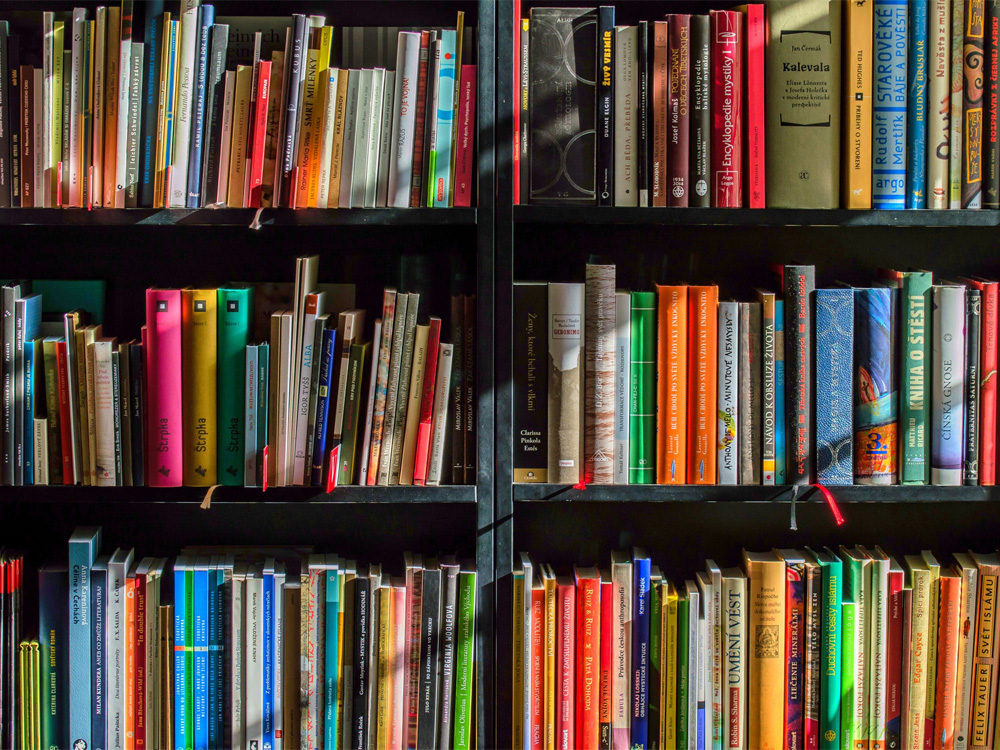When producing booklets for your business, picking the right book binding method is as important as selecting the right content. While they all serve the same function, each method can result in a totally different look, feel, and product capability. It can be challenging making the right call matching binding type to content, but we’ve broken it down for you. Read below about what sets each method apart.
Saddle Stitch Book Binding
Firstly, saddle stitch binding is the most common and often most cost-effective method of bookbinding today. You probably see thousands of examples of saddle stitch binding over the course of a given year without even noticing. In saddle stitch binding, sheets of paper, folded in half, are joined at the fold and attached with 2 or more wire staples, which are “stitched” through the paper. Consequently, the page count for saddle stitch booklets must be a multiple of 4, typically maxing out at 64. As the most economical book binding method, saddle stitch is ideal for short run printing. However, it can be less resilient than other methods, making it ideal for single-use pieces, like playbills or brochures.
Spiral Book Binding
Another cost-effective book binding method, examples of spiral bound books can be commonly found in classrooms and business places. In a spiral bound booklet, each page, including the front and back cover, is punched with a series of small, evenly spaced holes aligned to the left edge of the paper. Then, with each sheet lined up with the holes overlapping, a long plastic coil is threaded through, forming a spiral. After the coil is fully threaded through, each end is bent in slightly so the entire book doesn’t unravel. Even the color of the coil can be customized to give each booklet a unique look.
Spiral binding is ideal for short production runs as the method is relatively economical. The lack of chemical adhesives that need to dry makes spiral binding a great choice for projects with short turnarounds. Spiral binding is perfect for wall calendars, business presentations, instruction manuals, and more.
Wire-o Binding
Wire-o binding uses multiple small wire coils rather than a single one threaded through every hole. Each individual coil takes up only two holes, with the total number of coils depending on the size of the booklet. Wire-o binding has many of the same benefits as spiral binding. For example, pages can open easily and go to a full 360 degree rotation. The binding can accommodate any page count and index tabs can be added for ease of access. Wire-o binding is ideal for business presentations or travel guides. It can give any booklet a professional look, while staying durable.
Perfect Bound Binding
Finally, perfect binding is a popular method, with pages bound together using a strong adhesive applied to one side rather than the coils or wires of the other methods. Think of paperback books or those famous (or infamous) black and white composition notebooks you might remember from school. For a perfect bound book, a strong adhesive is applied to the spine, joining together the cover, typically made with a heavier paper stock, and all of the pages, after which the cover and pages are cut down to the exact same size, giving the book a “perfect” lineup. Perfect binding is great for catalogs, product brochures, instruction manuals, and notebooks.
Calitho is a commercial printer and visual communications company serving the San Francisco Bay Area and beyond. Let us help with your next printing project by requesting a quote today.

